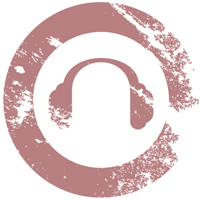Audio in an Asynchronous Learning Environment

As with any higher educational institution, the University of Advancing Technology seeks to engage students on a multitude of levels. In the Summer of 2006, however, the provost of the university was looking for an opportunity to engage both the online and on campus population. He detailed what he was looking for with the various deans of the institution and handed the task over to the Center for Learning Excellence (CLE) to implement. From here the objectives were clear, but the resources and technology needed to launch this were not.
What the provost had asked for was the audio capture of lectures on campus. He explained that many institutions had adopted policies requiring or recommending their faculty record their lectures and make them available to their respective students. UAT was also going to forge into these uncharted territories, but it was going to do so in its own unique fashion.
Determining the right toolsThe CLE was then tasked to find the correct resources to make the recording of lectures available. Each course at UAT, whether resident or online, has its own course shell that is maintained and updated by eCollege. eCollege also stores the information, placing the onus on the faculty member solely for the content to be delivered to the student. One of the tools eCollege has is "Doc Sharing." Here, both faculty and students can upload any file to be used and distributed amongst the class. This seemed like a very logical place for the placement of recorded lectures.
After finding the place to house the information, the largest and most daunting task remained: finding a tool that was easy to use, portable, and would allow for quick manipulation of files. The CLE consulted with the university's IT department to help find such an item. A specialist in hardware and software was able to find the i-River T30, an MP3 player and recorder. The player is about 1.5 cubic inches, and it rests easily on a lanyard worn around the neck. It has six buttons and two input jacks (one for an external microphone and one for the USB), making it a very user-friendly solution. Two other characteristics that made it stand above the others were that it held more than 1 GB of data (about 73 hours of recorded audio), and it recorded the files in MP3 format, rather than a different medium that would have to have been manipulated in some way. Instead of making this a resource for just those faculty who were on campus, both the Provost and the CLE thought that the experience should be shared throughout the university, and, thus, these recorders/players were to be given to all faculty. Once the correct recording device was found, 80 of these were ordered and given to the Center for Learning Excellence to distribute.
Now that the tool and location had been selected, a training program had to be created that would be user-friendly to on campus faculty and adjunct and online faculty. This was delivered just before the start of the fall 2006 semester. At the faculty's weekly meeting, the Center for Learning Excellence coordinator outlined how to use the i-River and how to upload the audio documents using the USB cord and provided tips on file maintenance. In an effort to make sure files were easy to upload and download, faculty were advised to set the recording quality to "low." This would make a 50-minute lecture about 14 MB, which is much more manageable than the same lecture recorded on the "medium" setting. This presentation was uploaded with a recording of the meeting to a course shell accessible by all faculty. At the end of the presentation, all faculty were given their own i-River T30 and asked to begin using the recording of their lectures as they saw fit.
Hurdles and costsAfter one semester of having these resources available, the number of faculty using them is less than what was originally expected. However low the number of early adapters was, however, there is still quite a breadth of disciplines represented in those that have begun recording their lectures. This includes faculty in the Graduate college, the Multimedia college, and the Software Engineering college. By allowing these people to share their uses and experiences, it's hoped that others will find the inherent value in giving students an option of listening to lecture in an asynchronous fashion.
Also, upgrading the firmware of the recording units has posed another hurdle. This was addressed by e-mailing each of the faculty members with a hyperlink to instructions on how to upgrade the firmware, along with a member of IT making himself available to perform this upgrade during another faculty meeting.
The majority of the cost of implementing the recording of lectures was the purchase cost itself: By purchasing 80 of them at about $60 dollars apiece, the investment of less than $5,000 dollars was money well spent. Faculty, over time, will undoubtedly find how this tool can be implemented in their respective courses and will soon be providing their lectures in a format that works well for them. By providing the resources and allowing faculty to "play" with this new technology over the first semester, it is believed that anecdotal evidence of successes will begin to emerge as a best practice throughout the university.
About the Author
Jay Kahl is the Center for Learning Excellence coordinator at the University of Advancing Technology in Tempe AZ. He currently teaches the Ethics in Technology course at the institution. His previous experience in teaching was with disadvantaged junior high and high school students in the Phoenix metro area.